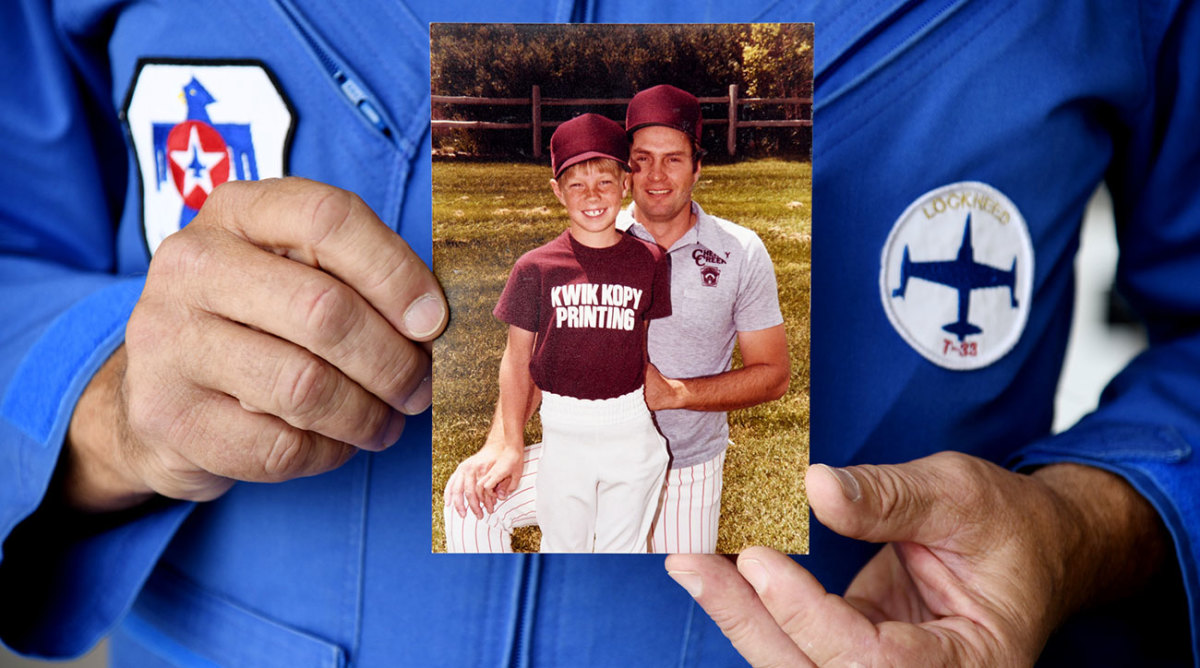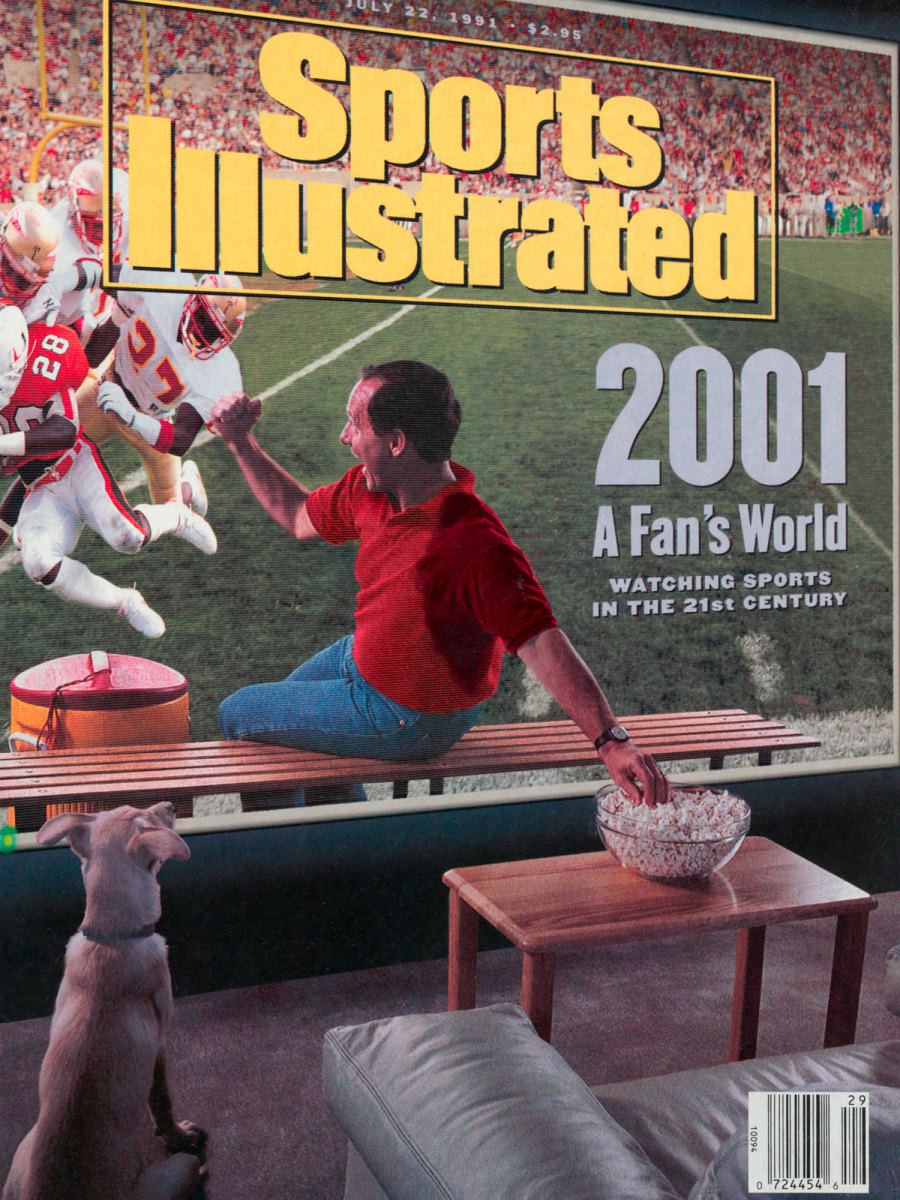'Horns Down' Is Already This Year's Most Controversial College Football Celebration

Editor's note: Welcome to the Weekend Read, SI's weekly newsletter. Below the story you'll find our favorite pieces of the week and a photo from our archive. Click here to subscribe.
ARLINGTON, Tx. — Among the various hot topics at Big 12 media days this week was one about a famous hand gesture.
Opposing teams have been inverting the “Hook ‘Em Horns” sign forever. The reason? “S---,” legendary Oklahoma coach Barry Switzer recently told ESPN. “It’s just fun!”
As a quick refresher, the hand signal in question is made by extending the index and pinky fingers while grasping the middle two fingers with the thumb. It’s supposed to look like the Longhorns mascot Bevo. Players from Oklahoma, West Virginia and elsewhere, however, prefer it upside down.
The “Horns Down” gesture has made a great comeback among Texas foes recently. In fact it’s gotten so controversial and become enough of A Thing that it needed to be addressed by Big 12 director of officiating Greg Burks. While answering questions at conference media days this week, he was asked to weigh in on whether the move should be considered an unsportsmanlike penalty. He was noncommittal.
“It depends,” he said.
Last November, former West Virginia quarterback Will Grier flashed Horns Down toward the Texas student section after he made the game-winning two-point conversion with 16 seconds left to stun the Longhorns, 42–41. Texas coach Tom Herman said afterward that he thought Grier could have been penalized for taunting, which would have negated the score.
“I’ve got to brush up on my rules and get some questions answered,” Herman said at the time.
UT quarterback Sam Ehlinger was also offended, tweeting after that game: “I remember every single team and player that disrespects the rich tradition of Texas by putting the horns down.”
Herman has asked for some clarity. So has Oklahoma coach Lincoln Riley—he wanted to get things straight before the Big 12 championship game so his players knew the consequences.
According to Burks, though, penalizing a player will depend on his intent.
“If somebody scores quickly, turns to their cheering section and it’s quick and they move on, we’re not going to do anything with that,” Burks said. “If it’s to a bench or another player and it’s prolonged, it would be an unsportsmanlike act.”
The ambiguity will only create a bigger fuss this season as players continue to celebrate and take jabs at Texas.
“I know people want us to be very definitive on that,” Burks said. “But it’s like almost any touchdown celebration. Is it directed at an opponent or just a celebration as a team?”
Herman is turning this into as much of a positive as he can, saying the fact that this is even a topic to discuss with conference officials is “flattering.”
“As long as it’s officiated fairly and evenly throughout the season, then that’s not up to me,” Herman said. “But taunting is taunting. Our guys are reprimanded very harshly if we ever get called for a taunting penalty because there’s no place for taunting in football.”
So where does everybody go from here? Even though no real decision has been made, Burks does have a tip.
“My advice is that if you want to do that, do that back in your bench area,” he said. “Get away from where you’re an individual drawing attention to yourself.”
Glad that’s settled ... sort of.

Recommended Reading
• Roy Halladay took to the skies to quiet the noise of the real world. It was there he found freedom, but that freedom cost him his life. (By Stephanie Apstein)
• The worlds of sports and fashion are intersecting more than ever before. Unveiling SI’s 2019 Fashionable 50 list, honoring the most stylish athletes in sports.
• With an entire roster of No. 45s to honor Tyler Skaggs, the Angels threw a no-hitter in their first home game since his death. This is how it happened. (By Michael McKnight)
• Every team's best possible NBA Jam duo, ranked. (By Khadrice Rollins)
• The NFL and union are instituting more ways to help players with mental health wellness. This is how they're trying to get the players themselves to buy in. (By Jenny Vrentas)

Vault Photo of the Week: What Will It Be Like to Watch Sports in 2001?
In one of the more curious covers in the 65-year history of SI, we wondered in July 1991 what it would be like to watch sports in 2001. Yet the most surprising takeaways from the story didn't involve the sports viewing experience at all. Instead the author, William Oscar Johnson, describes what it's like to enjoy a 20-game NFL season, the $50,000 annual salary for college athletes and a year-round NBA schedule. Imagine that.
What will sports be like in 2029?
¯\_(ツ)_/¯
Best of the Rest
Editor's note: Below are some of our favorite stories of the week not published by SI. This week's list is curated by Alaa Abdeldaiem.
• In 1910, East Texas saw one of America’s deadliest post-Reconstruction racial purges. Hollie-Jawaid and her family have spent the past several years struggling to unearth that dark past, as Michael Barajas details for the Texas Observer.
• The four highest tallies of games missed by young NBA players in their first two seasons have occurred in the past four years. The question is why. ESPN’s Baxter Holmes sets out to find out by investigating the threats of youth basketball.
• Five years ago, Malaysia Airlines Flight 370 vanished into the Indian Ocean. Officials apparently know more about its disappearance than they dare to say. The Atlantic’s William Langewiesche takes a deep dive into what really happened.
• Claudia Rankine of the New York Times wanted to know what “white men thought about their privilege.” So she asked. Here is what she found.
• The last two years of Ariana Grande’s life have been full of triumph, tragedy and excruciating heartache. The pop-star spoke to Vogue’s Rob Haskell about how each phase has helped her grow up.
Editor’s note: What kind of stories and content would you like to see in the Weekend Read? Let's chat at SIWeekendRead@gmail.com.
